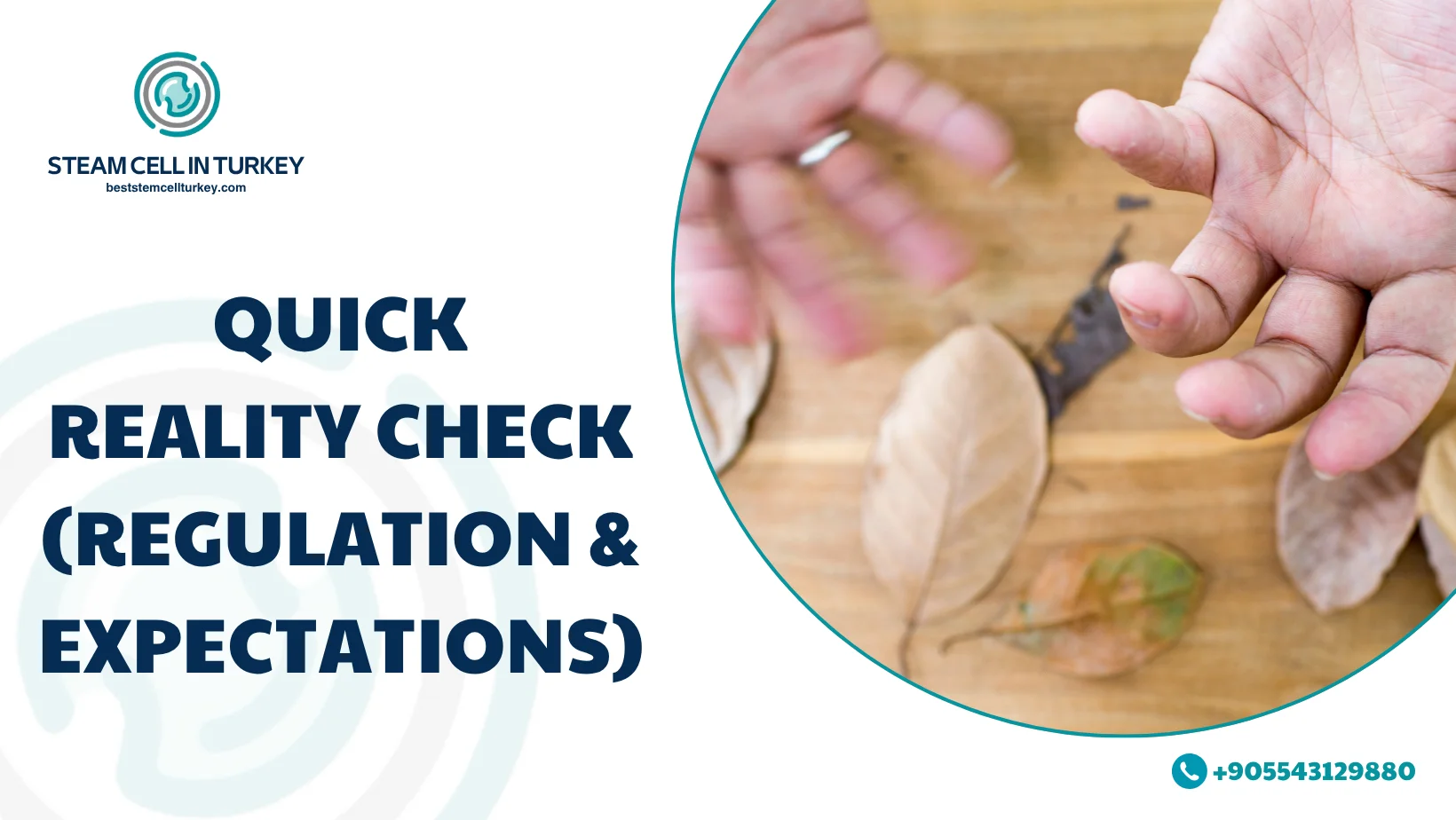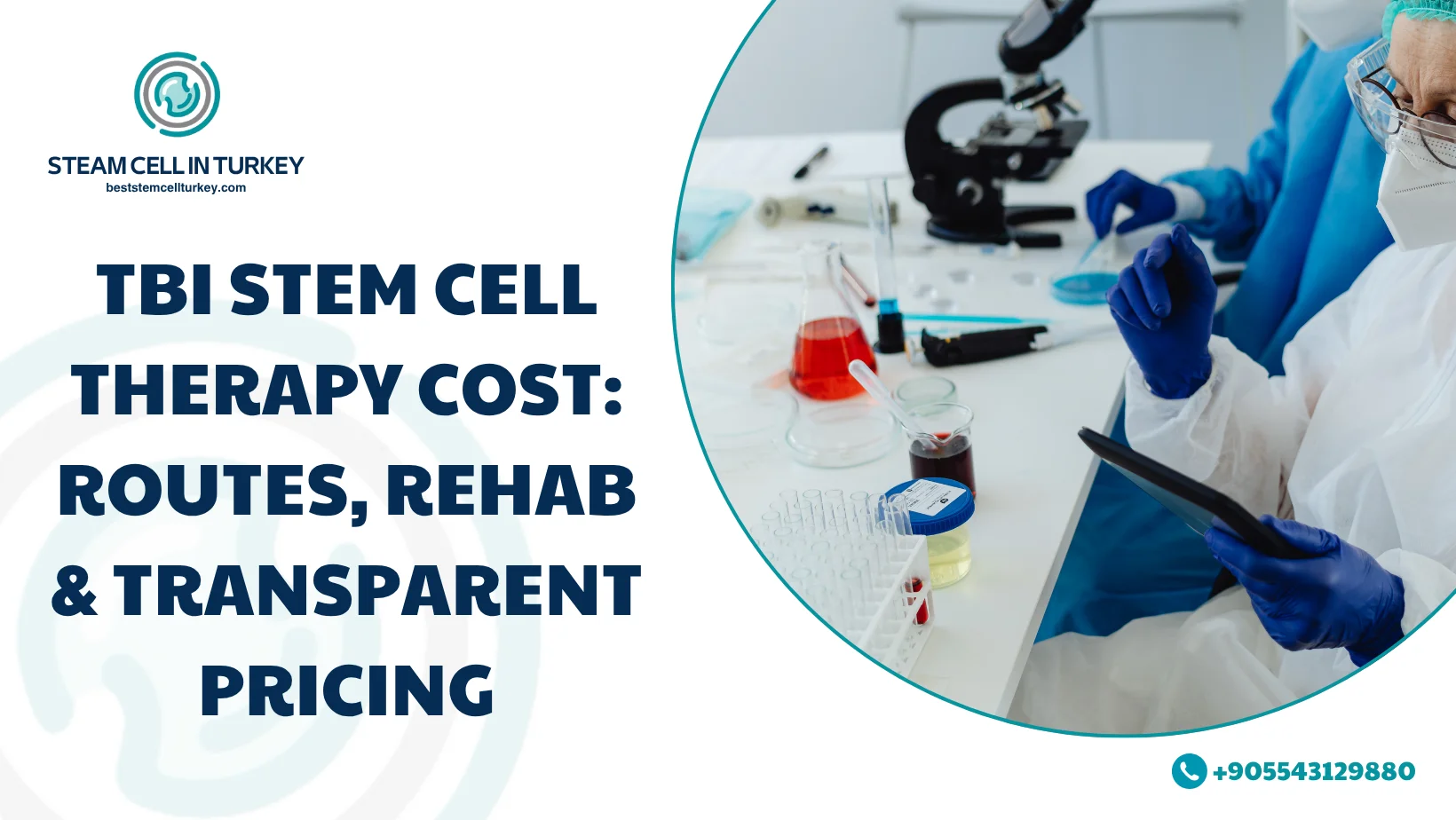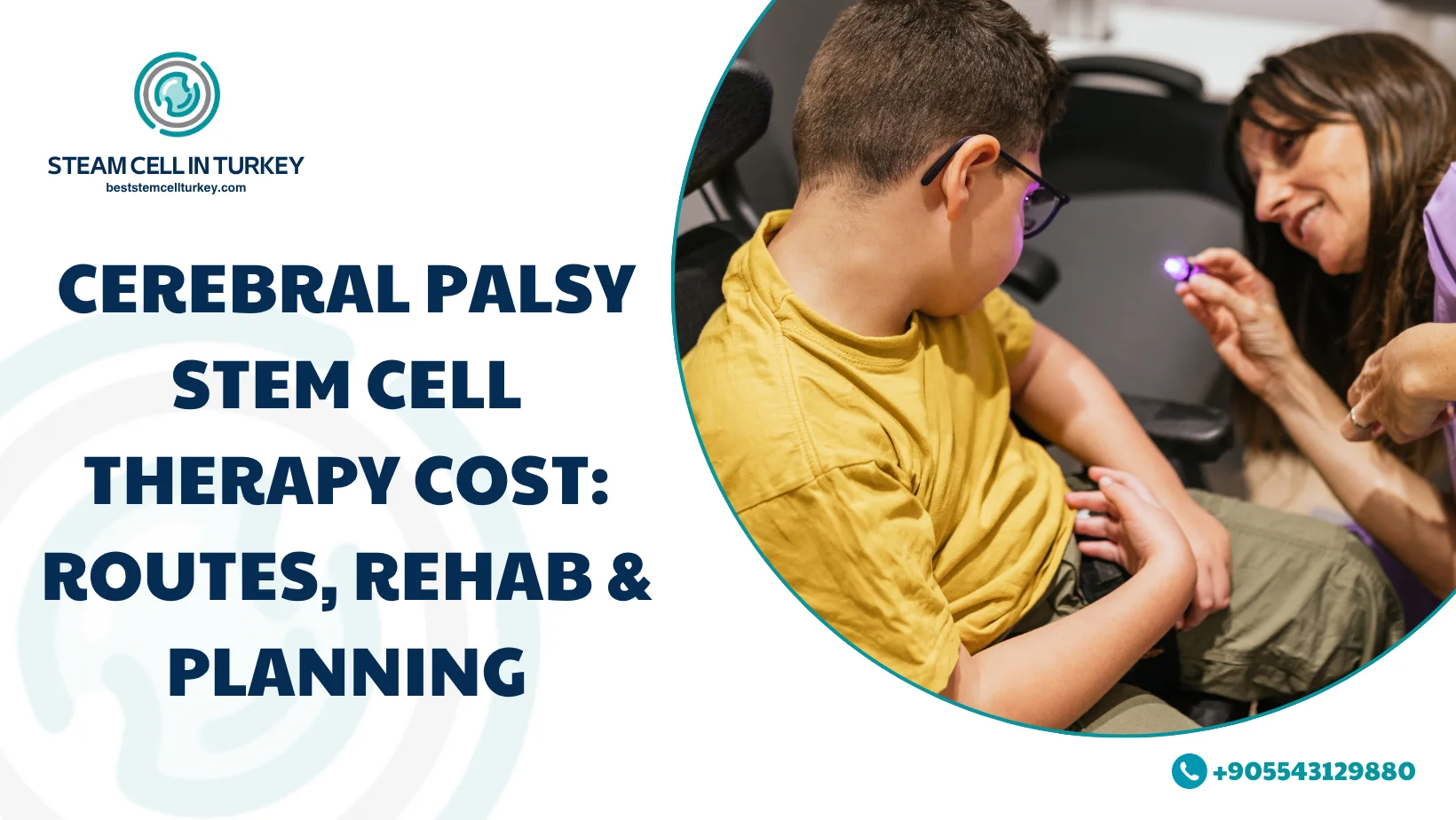Confident Parkinson’s planning starts with clarity—not guesswork. This guide breaks down the Parkinson’s disease stem cell therapy cost and explains why numbers vary by therapy type (investigational cell-replacement vs. supportive MSC programs), hospital resources, manufacturing/GMP documentation, and follow-up. Throughout, we align expectations with science and regulation—and show how to compare quotes fairly, with paperwork you can verify.
Quick reality check (regulation & expectations)

-
U.S. FDA: many stem-cell/exosome offerings marketed direct-to-patient are unapproved; clinics must not overpromise and should explain risks and reporting routes.
-
EU (ATMP): cell therapies are regulated medicines under ATMP frameworks—ask providers how they comply.
-
Always demand GMP certificate scope/validity and batch COA (identity, viability, sterility/endotoxin, mycoplasma) before payment.
First, know which “stem cell therapy” you’re pricing
1) Investigational dopaminergic neuron replacement (cell transplant)
-
Goal: replace dopamine-producing neurons using iPSC/ESC-derived midbrain dopaminergic progenitors.
-
Status: investigational; early trials show feasibility/tolerability with evidence of graft activity; notable programs include bemdaneprocel (BRT-DA01) advancing after Phase I data, and Kyoto iPSC Phase I/II safety/feasibility results.
-
Setting: hospital, stereotactic neurosurgery, specialized neuro/OR teams, protocolized imaging follow-up (e.g., 18F-DOPA PET in studies).
-
Pricing drivers: OR time, neurosurgical team, GMP product manufacture, inpatient days, imaging.
2) MSC (mesenchymal stromal cell) programs for PD
-
Intent: supportive/paracrine immunomodulatory effects (not neuronal replacement).
-
Status: preliminary/investigational; communications should follow ISSCR guidance (no guarantees, clear consent, realistic endpoints).
-
Setting: clinic or hospital day-care; staged sessions with neurology co-management.
-
Pricing drivers: dose (million cells), number of sessions, GMP testing, follow-up/rehab blocks.
What actually drives cost (line-by-line)
A) Cell-replacement (hospital-based)
-
Pre-op workup: movement-disorder evaluation, MRI, labs, medication plan, anesthesia clearance.
-
Cell product manufacturing: pluripotent differentiation to midbrain dopaminergic lineage, release testing (COA), cold-chain logistics.
-
Surgical delivery: stereotactic neurosurgery, OR/anesthesia/imaging guidance, inpatient observation (infection, neuro checks).
-
Follow-up: scheduled imaging (trial-dependent), UPDRS tracking, meds titration, adverse-event monitoring.
-
Docs to see: ATMP alignment, GMP scope, batch COA, compassionate-use/trial context.
B) MSC programs (clinic/hospital)
-
Manufacturing quality: GMP certificate + COA (identity, viability, sterility/endotoxin, mycoplasma), handling/storage.
-
Dose & sessions: cells per session and total course, spacing (often 4–6 weeks), maintenance logic.
-
Adjuncts & follow-up: PT/OT, gait/balance metrics, symptom logs, tele-neurology.
-
Docs to see: ISSCR-aligned consent, FDA/EMA posture, adverse-event reporting route.
Fair-comparison tip: ask for (1) Includes/Excludes table (workup, procedure, imaging, hospital days, follow-ups), (2) cost per million cells (when relevant), (3) GMP certificate + COA copies. Apples-to-apples starts on paper.
Eligibility & how it changes your quote

-
Cell-replacement trials: typically enroll moderate PD with strict inclusion criteria. Most patients access these via trials, not private pay. If a self-pay path exists, price hinges on OR resources + GMP product. Confirm trial phase and registry listing.
-
MSC programs: investigational; candidacy shaped by comorbidities, imaging, symptom profile, and goals. Expect conservative language, rigorous consent, and coordinated neurology follow-up.
How to read a quote (5-minute checklist)
-
Therapy labeled clearly (cell-replacement vs. MSC).
-
Setting & length of stay (BMT/neuro OR vs. outpatient day-care).
-
Dose math (cells per session & total; or product yield for transplant).
-
Safety docs attached (GMP scope, batch COA, consent, AE reporting).
-
All-in totals with taxes/fees, imaging, caregiver lodging, and complication contingencies.
-
Follow-up plan (who does UPDRS, imaging cadence, rehab blocks, meds titration).
Sample package layouts (plug-and-play)
A) Dopaminergic Cell-Replacement (Investigational)
-
Workup: neurology eval + MRI + anesthesia clearance
-
Product: GMP differentiation, batch COA delivered pre-op
-
Procedure: stereotactic delivery, inpatient observation
-
Follow-up: scheduled imaging/assessments (per protocol), med titration
-
Add-ons: caregiver lodging, interpreter, extended rehab
B) MSC Support Program (Investigational)
-
Sessions: 3× visits (4–6 weeks apart), dose disclosed per visit & total
-
Includes: GMP COA, neurology/rehab check-ins, objective tracking
-
Maintenance: case-dependent (e.g., every 4–6 months)
-
Add-ons: PT/OT blocks, symptom-logging kit, caregiver support
Pre-care, post-care & rehab (turn cost into value)
-
Before: medication reconciliation; fall-risk review; plan for caregiver days.
-
After: staged PT/OT (gait/balance/posture), voice/swallow if indicated, energy conservation strategies, symptom logs with UPDRS checkpoints.
-
Safety: know the after-hours contact and AE escalation path; keep copies of GMP/COA and discharge summaries.
How we quote (transparent & comparable)
You’ll get a side-by-side:
Cell-replacement path: workup → GMP product (scope + COA) → neurosurgical delivery → inpatient days → follow-up imaging & assessments.
MSC path: cost per million cells, sessions & spacing, neurology follow-up, rehab plan—with GMP certificate + COA up front.
Optional bundles: travel logistics, caregiver lodging, interpreter, and financing shown line-by-line.
→ Start with clarity: Stem Cell Therapy Cost · Financing · Book a Free Consultation
Where the field is heading (plan realistically)
Cell-based therapies in neurology are moving steadily, but progress requires patience and careful framing. Neutral organizations such as the Michael J. Fox Foundation stress that while cell-replacement strategies hold promise, they remain investigational. Patients and families should plan with realism, not assumptions of near-term availability.
-
Key uncertainties: dosing strategies, delivery methods, long-term survival of transplanted cells, and durability of benefit all remain open questions.
-
Recent milestones: early reports from Kyoto’s iPSC Phase I/II studies, and bemdaneprocel advancing through clinical development.
-
Current reality: no regulatory approvals yet—these are trials, not established treatments.
-
Planning implications: timelines are long, budgets should account for ongoing conventional care, and trial participation may be the most realistic access route in the near term.
The direction is encouraging, but the smart approach is to plan around today’s proven care while watching tomorrow’s advances carefully.
Plan with proof, not promises
Smart choices in advanced care start with evidence, not hype. That’s why Best Stem Cell Turkey emphasize clarity at every step—so you can weigh options fairly and move forward only when it feels right.
-
Transparent proposals → every cost and step outlined in writing.
-
GMP documentation → verified quality standards you can review.
-
Concierge logistics → travel, transfers, and scheduling handled smoothly.
-
Flexible financing → realistic payment paths to start when you’re ready.
Because in decisions that matter, proof always outweighs promises.
→ Book a Free Consultation · See Financing · Compare Packages
FAQs about Parkinson’s Disease Stem Cell Therapy Cost

1) Why do quotes vary so widely?
Because “stem cell therapy” spans neurosurgical cell-replacement (high OR + GMP costs + imaging) versus MSC support programs (dose/session-based with GMP testing). Demand GMP certificate + COA and a full Includes/Excludes table.
2) Are there approved stem-cell therapies for PD today?
No. Leading programs (e.g., bemdaneprocel; Kyoto iPSC) are in clinical trials. Outside trials, be cautious with any clinic offering “approved” cures.
3) Are MSC options proven to restore dopamine cells?
No—MSC approaches are investigational for supportive effects, not neuronal replacement; claims should follow ISSCR standards and FDA cautions.
4) What documents should I demand before paying?
GMP certificate (scope/dates), batch COA (identity/viability/sterility/endotoxin/mycoplasma), storage/handling, regulatory posture, adverse-event reporting routes.
5) Can I finance and bundle travel/caregiver support?
Yes—use Financing for structured payments and Packages for transfers, hotel near the center, interpreter, and caregiver lodging.
Medical Sources
-
FDA — Consumer alerts & patient info on regenerative medicine products (unapproved uses, risks). U.S. Food and Drug Administration+1
-
EMA — Advanced Therapy Medicinal Products (ATMP) overview (EU framework for cell therapies). (EMA)
-
ISSCR — Guidelines for Stem Cell Research and Clinical Translation (2021) (standards for clinical use and communication). isscr.org+1
-
BlueRock Therapeutics / Bayer — Bemdaneprocel (BRT-DA01) advanced to Phase III (PD cell-replacement). bayer.com
-
Kyoto University (Nature, 2025) — Phase I/II iPSC-derived dopaminergic cell transplant safety/feasibility data. Nature
-
Michael J. Fox Foundation — State of PD stem-cell/cell-based therapies (context and cautions). michaeljfox.org+1
Ready to plan with confidence?
→ Book a Free Consultation
→ Explore Financing Options
→ contact with us via what’s up



